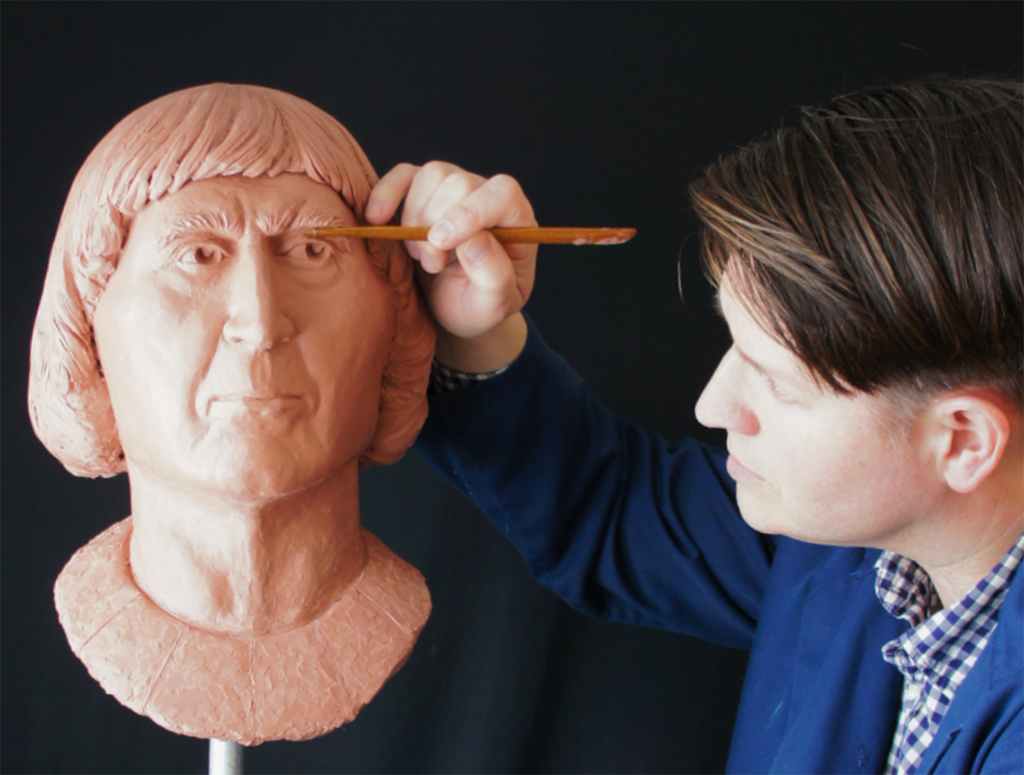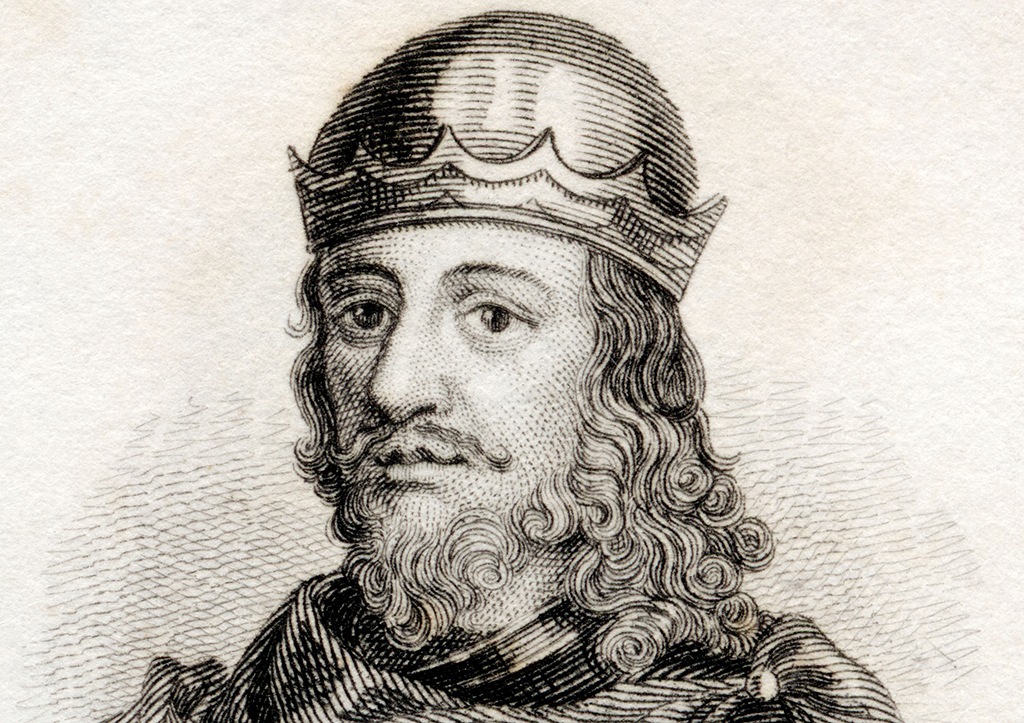
How the true face of Robert the Bruce was discovered
Scotland’s most legendary and romanticised king, Robert the Bruce, has become a symbol of national pride for many Scots around the world.
Immortalised in countless paintings and statues, banknotes and romantic novels, television dramas and, perhaps most famously in the 1995 epic movie Braveheart and last year’s Netflix film Outlaw King, we all have an idea of what this heroic warrior would have looked like. His influence has reached far and wide and infiltrates modern day life more than many realise.
He is even the inspiration behind Bruce Wayne, the secret identity of DC Comics’ superhero Batman – a symbol of strength and bravery.
King Robert I reigned from 1306 until his death in 1329 and successfully fought to regain Scotland’s independence from England in the First War of Scottish Independence. After an initial defeat by King Edward I of England’s army, Robert fled to the Hebrides.
Upon his return in 1307 he launched a highly successful guerrilla campaign against his enemies concluding with the Battle of Bannockburn in 1314 after which he sent King Edward’s army ‘homeward, tae think again’, as Flower of Scotland, our unofficial national anthem, proclaims.
King Edward II of England refused to renounce his claim and so, in 1318, the Scottish aristocracy signed the Declaration of Arbroath and submitted it to the Pope. In 1324 the Pope officially recognised Robert as King of Scotland and shortly after, the Auld Alliance was reformed. In 1327 Scotland and England signed the Treaty of Edinburgh-Northampton and peace was established between the two crowns.
In the final years of his life, Robert is thought to have suffered ill health. Speculation as to his illness includes tuberculosis, leprosy or syphilis. One letter from the time suggests that ‘he can scarcely move anything but his tongue’, while another says ‘it began through a benumbing brought on by a lying cold’.
His exact ailment will most likely remain a mystery, but the common suggestion that the king suffered from leprosy has largely been discredited as anti-Scottish propaganda.
Robert was buried at Dunfermline Abbey and his heart interred at Melrose Abbey. In 1818, having been lost for many centuries, his grave was rediscovered by workmen. His skeleton was exhumed and examined and a plaster cast of his skull was taken by artist William Scoular, before he was once again buried on 5 November 1819. One of Scoular’s original casts is housed at the Palace of Holyrood, and since its creation several more copies of this cast have been made.
Another lives in the University of Glasgow’s Hunterian Museum and has been the subject of several craniofacial reconstructions over the years.

Sculptor and forensic artist Christian Cardell Corbet
More recent methods use a 3D replication process known as stereolithography. Another cast belongs to Andrew Bruce, 11th Earl of Elgin and lives in his home, Broomhall House, near Dunfermline. Lord Elgin is the current chief
of Clan Bruce and a direct descendant of King Robert.
In 2014, the world-renowned Canadian painter, sculptor and forensic artist Christian Cardell Corbet, whose subjects have included Her Majesty the Queen Mother and His Royal Highness the Duke of Edinburgh, requested to sculpt a portrait bust of Lord Elgin to mark the 700th anniversary of the Battle of Bannockburn and to commemorate Lord Elgin’s role as Honorary Colonel of the 31 Combat Engineer Regiment (The Elgins) in the Canadian Army.
‘If Prince Philip had his portrait done, then I should too,’ Lord Elgin said when asked. ‘Whilst Lord Elgin sat for me we discussed whether or not King Robert really had leprosy and that perhaps a lot of artistic license had been given to various facial reconstructions made over the years,’ recalls Corbet.
As Corbet left Broomhall, Lord Elgin gave him the family’s cast of King Robert’s skull, one of the original casts, to take back to Canada and begin investigating. ‘I agreed to pull together a research team of people – the best historians and forensic scientists – to begin work on a forensic project, based around this discussion Lord Elgin and I had had,’ said Corbet.
The Elgin family officially sanctioned the project – the first time King Robert’s family have ever supported a facial reconstruction project.
‘I have huge respect for other projects like this, but ours was done with an unbiased approach,’ says Corbet. ‘None of us are Scottish and we were completely subjective.’

A traditional painting of Robert the Bruce
A leading orthodontics specialist from France came forward to take part and Dr Andrew Nelson PhD, from the University of Western Ontario, who has dealt with some of the world’s most well regarded and unique 3D laser scan reconstructions – such as Nefer-Mut, an Egyptian mummy – took charge of the forensic side of the project.
A group of historians delved into contemporary accounts of King Robert, as well as written accounts of the interment in 1818 to determine the condition of the body when first examined. ‘We were careful not to glamorise the king, and to put in exactly what the scans showed,’ says Corbet. ‘And by using Lord Elgin’s original cast, not a more recent copy – of which there are many – we could expect the most accurate outcome possible.’
Dr Nelson’s research paper, A Paleopathological Assessment of the Leprosy Diagnosis for King Robert the Bruce, confidently concludes that the lesions expressed on the skull cast are not consistent with leprosy and may be from trauma in battle or even ‘cast trauma’ inflicted when Scoular took the original mould in 1818.
‘Once we started we realised that in order to do a reconstruction like this you have to look at a lot of things,’ says Corbet. ‘Some past projects have overlooked major scars, which is surprisingly easy to do because there is just so much to consider.’
Corbet’s finished clay bust of Robert the Bruce was cast in bronze and unveiled by Lord Charles Bruce at The Stirling Smith in Stirling on 23 March 2017. The bust was mounted on a plinth, made by Duncan Thompson of the Strathleven Artizans from ancient Bruce wood.
It was a gift to the people of Scotland, to finally see exactly what Scotland’s national hero really looked like.
This feature was originally published in 2017.
TAGS

